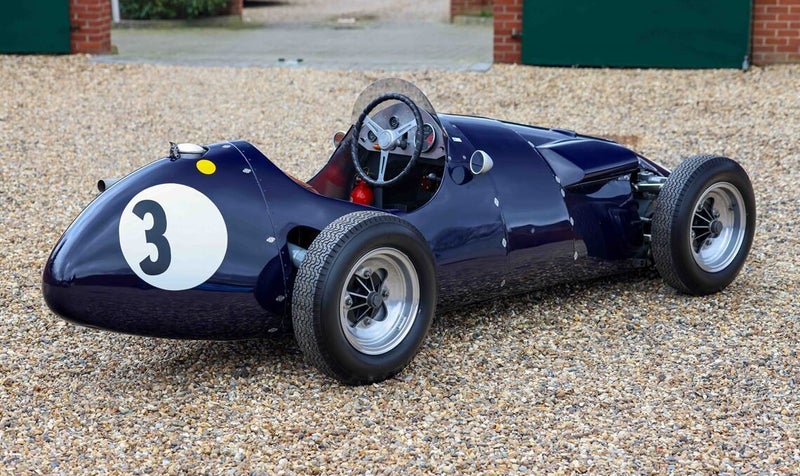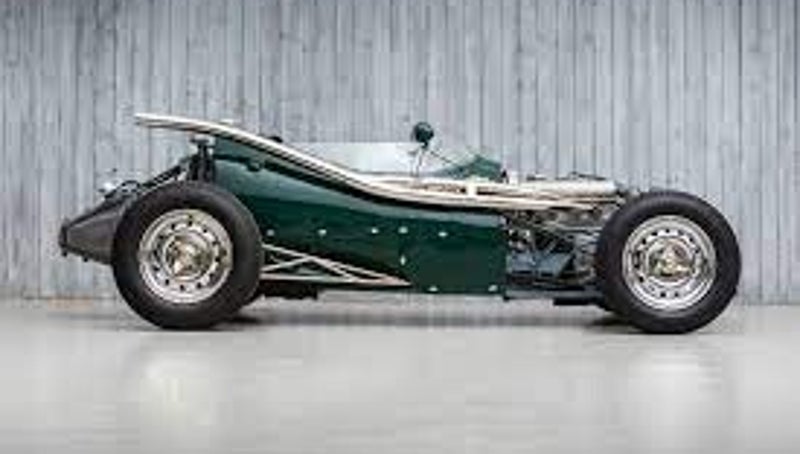


Connaught Engineering, often referred to simply as Connaught, was a Formula One, Formula Two and other sports car divisions constructor from the United Kingdom. Their cars participated in 18 Grands Prix, entering a total of 52 races with their A, B, and C Type Formula 2 and Formula 1 Grand Prix Cars. They achieved 1 podium and scored 17 championship points. The name Connaught is said to derive from abbreviating Continental Autos, the garage in Send, Surrey, where the cars were built and which specialised in sales and repair of European sports cars such as Bugatti, but given the spelling may reference the Irish province of Connaught.
type a




1952-1954
The Connaught Type A was a Formula Two race car, designed, developed, and built by British manufacturer Connaught Engineering in 1950 and used until the late 1950s.
Nine Type A units were built between 1950 and 1953. A tenth car was built up from a bare chassis in 1961. All A-Types had a conventional space frame and independent suspension with wishbones and torsion bars on all wheels. The rear suspensions were replaced with De Dion axles during the 1951 racing season. The cars were powered by Lea Francis four-cylinder engines that delivered 135 hp.
This performance was not outstanding even for a Formula 2 car, so Lea-Francis improved the engine. When the world championship races were held in Formula 2 cars in 1952, the engine had an output of 165 hp according to the factory. The A-Types also got fuel injection. One privateer car, chassis number A8, was converted to take an Alta 2.5 litre engine in an unsuccessful attempt to be competitive in Formula One category.
On the racetracks, the Connaughts were welcome additions to the starting grid. The racing cars were never capable of winning, even when top drivers such as Johnny Claes, Jack Fairman, Tony Rolt, Bill Whitehouse, and Roy Salvadori drove them. At the 1952 British Grand Prix, Dennis Poore and Eric Thompson finished fourth and fifth in the race.

type b




1955-1958
The Connaught Type B was a racing car made by Connaught Engineering of England used in Formula One racing between 1955 and 1958. Although not a success in the Formula One World Championship, it became the first British car since 1924 to win a Continental European motor race when Tony Brooks won the non-championship 1955 Syracuse Grand Prix.
Connaught had intended to build a streamlined Grand Prix car based around the 2.5-litre Coventry Climax FPE 'Godiva' engine. When that project was abandoned, Connaught instead switched to using the Alta straight 4 engine. The streamliner design was rejected as impractical, the drivers complaining of similar problems to that of the Mercedes-Benz W196 streamliner, in that they were unable to place the car accurately at the apex of bends. It was replaced by more conventional bodywork, close-fitting and streamlined.
Seven Type B chassis were built between 1954 and 1958. All had a conventional space frame body on a tubular chassis independent suspension with wishbones and torsion bars at the front and a de Dion axle at the rear. Disk brakes were fitted all round. The cars were powered by Alta 2.5-litre four-cylinder engines that delivered 250 bhp through a four-speed preselector gearbox.

type c

1957-1959



On October 23, 1955 Tony Brooks scored the first Grand Prix victory for a British manufacturer in 31 years by winning the Syracuse Grand Prix in a Connaught B-Type. A mere 18 months later, it was all over as company founder Rodney Clarke closed the factory and offered all the assets at auction. Among the lots was the all-new but un-raced C-Type Grand Prix car. The reserve was not met and the car was sold with the rest of the remaining assets to Alan Brown. He did eventually find an interest party for the unique C-Type in privateers Paul Emery and John Turner.
What set the C-Type apart from the previous Connaughts was the lightweight steel spaceframe chassis. At the front double-wishbone suspension was fitted while a revised DeDion rear axle was used. The Dunlop disc brakes from the B-Type were carried over but now mounted in-board at the rear. The C-Type was powered by the tried and trusted Alta four-cylinder engine. Fitted with twin overhead camshafts and a pair of Weber carburettors, it produced around 250bhp. The Grand Prix car was clothed in the 'toothpaste tube' body with a distinct high tail that was also tried on one of the earlier B-Types.
The C-Type did not make its competition debut until the 1959 American Grand Prix at Sebring where it was entered for American racer Bob Said by Emery and Turner.

1959: Bob Said

The Connaught Type-D GT was a passion project of a former Jaguar engineer who started his own car business in the early 2000s. The goal, develop a V10 powered hybrid sports car of the future. Unfortunately, the lofty engineering goals of the Connaught team meant their creation never reached full production, and the company folded in 2004 due to financial pressures. This futuristic drivetrain that combined a lightweight sports car with hybrid tech was the peak of innovation in 2004 especially when the only contemporary hybrid was the Toyota Prius.
type d




2004-2006
The Connaught Type D is a series of prototype sports cars, designed, developed, and built by British manufacturer Connaught, between 2006 and 2007.
The Type D had a unique 2.0-litre narrow-angle V10 engine with its cylinder banks set a 22.5 degrees. The narrow angle allows the engine to use a single cylinder head, much like Volkswagen's popular VR6 engines and Lancia's narrow-angle V4 engines.
The V10 was meant to be augmented by an electric motor hybrid system for additional torque and allow the Connaught Type-D GT to achieve high fuel economy.
The car weighed less than 1000 kilos, and with 300 horsepower on tap from that supercharged V10, it would take just over 4 seconds to hit 100km/h and top out close to 275km/h. It featured a distinct looking, hand-built aluminium body, bespoke interior (very typical style for that time) and there were even plans for a hybrid powertrain. Sadly, as funds ran dry, it wasn’t meant to be.
The Connaught Type-D GT was recently given a second chance as the name and its assets were acquired by Bevan Davidson International, a Wales-based engineering firm. This unique organization specializes in the creation of experimental vehicles, which makes them uniquely qualified for the monumental task of reviving this forgotten car. With the original designer on board, the Connaught Type-D GT has the opportunity to finally make it to production and we can’t wait.








Create Your Own Website With JouwWeb